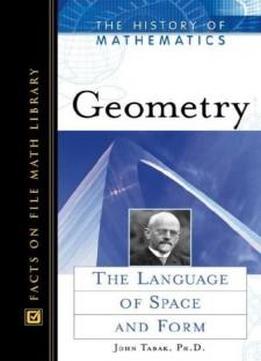
Geometry: The Language Of Space And Form (history Of Mathematics (facts On File))
by John Tabak /
2004 / English / PDF
1.1 MB Download
Geometry is a compelling look not only at how this branch of mathematics arose and flourished in different cultures at different times but also at its useful applications in science and in society. Author John Tabak pinpoints the beginnings of geometry to ancient Egypt and Mesopotamia and traces its extraordinary progress in Greece. Greek ideas about geometry, straight-edge and compass constructions, and the nature of mathematical proof dominated mathematical thought for about 2,000 years. Geometry continued its evolution with projective geometry, an area born through the work of Renaissance artists, such as da Vinci and Durer, and their exploration of methods for representing three-dimensional objects on two-dimensional surfaces. Over centuries, mathematicians refined these concepts to the extent that projective geometry found application in the area of computer graphics. Tabak explores geometry as an indispensable part of mathematics and a widely utilized tool in the scientific community.
Geometry includes an index, a chronology of notable events, a glossary of terms, a helpful list of Internet resources, and an array of historical and current print sources for further research. Keyed to current principles and standards in teaching math, The History of Mathematics set is essential for young readers who require information on relevant topics in mathematics.
Geometry is a compelling look not only at how this branch of mathematics arose and flourished in different cultures at different times but also at its useful applications in science and in society. Author John Tabak pinpoints the beginnings of geometry to ancient Egypt and Mesopotamia and traces its extraordinary progress in Greece. Greek ideas about geometry, straight-edge and compass constructions, and the nature of mathematical proof dominated mathematical thought for about 2,000 years. Geometry continued its evolution with projective geometry, an area born through the work of Renaissance artists, such as da Vinci and Durer, and their exploration of methods for representing three-dimensional objects on two-dimensional surfaces. Over centuries, mathematicians refined these concepts to the extent that projective geometry found application in the area of computer graphics. Tabak explores geometry as an indispensable part of mathematics and a widely utilized tool in the scientific community.
Geometry includes an index, a chronology of notable events, a glossary of terms, a helpful list of Internet resources, and an array of historical and current print sources for further research. Keyed to current principles and standards in teaching math, The History of Mathematics set is essential for young readers who require information on relevant topics in mathematics.











